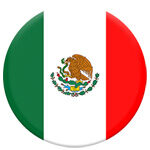
General Consulate in New Jersey
390 George Street,
Suite 100
New Brunswick, NJ 08901
Email: comunidadesnub@sre.gob.mx
(Upcoming Opening)
General Consulate in New York
27 East 39th Street.
New York, NY 10016
Phone: (212) 217-6400
Mexican Embassy in USA
1911 Pennsylvania Avenue NW
Washington, DC. 20006
Phone: (202) 728-1600
E-Mail: mexembusa@sre.gob.mx
USA Embassy in Mexico
Paseo de la Reforma 305. Colonia
Cuauhtémoc 06500
México, CDMX
Phone: (55) 5080-2000
Fax: (55) 5080-2005
